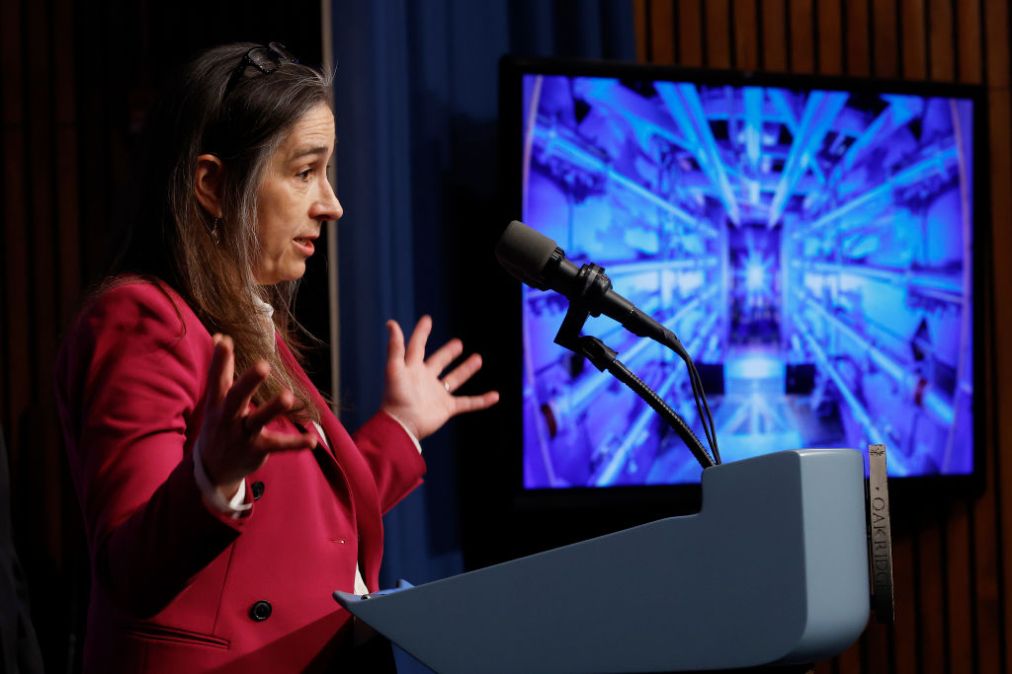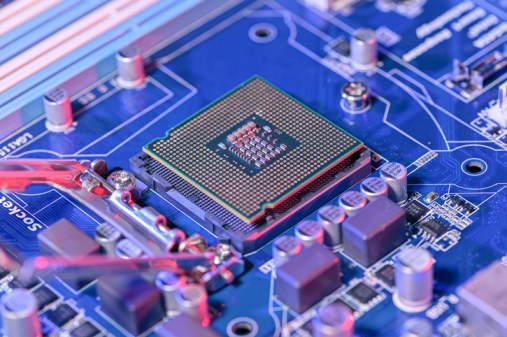Machine-learning models predicted ignition in fusion breakthrough experiment

Lawrence Livermore National Laboratory’s machine-learning models predicted the historic achievement of fusion ignition the week before its successful experiment on Dec. 5.
The National Ignition Facility’s design team fed the experimental design to the Cognitive Simulation (CogSim) machine-learning team for analysis, and it found the resulting fusion reactions would likely create more energy than was used to start the process — leading to ignition.
LLNL’s laser-based inertial confinement fusion research device is the size of three football fields and shot 192 laser beams — delivering 2.05 megajoules of ultraviolet energy to an almost perfectly round fuel capsule made of diamond — causing 3.15 megajoules’ worth of fusion ignition in a lab for the first time during the latest experiment. The achievement strengthens U.S. energy independence and national security with nuclear testing prohibited, and CogSim machine-learning models helped ensure the experiment avoided the previous year’s pitfalls.
“Last week our pre-shot predictions, improved by machine learning and the wealth of data we’ve collected, indicated that we had a better than 50% chance of exceeding the target gain of 1,” said LLNL Director Kim Budil, during a press conference at the Department of Energy on Tuesday.
NIF’s design team benchmarks complex plasma physics simulations and analytical models against experimental data collected over 60 years to create designs that will reach the extreme conditions required for fusion ignition. The most recent experiment reached pressures two times greater than the Sun’s and a temperature of 150 million degrees.
CogSim may run thousands of machine-learning simulations of an experimental design in the lead up.
“We have made quite a bit of advancements in our machine-learning models to kind of tie together our complex radiation hydrodynamics simulations of the experimental data and learning,” said Annie Kritcher, principal designer.
But NIF’s August 8, 2021 experiment reached the threshold for ignition, and September’s experiment paved the way for a new laser capability. So the design team relied on traditional methods for the latest experiment and only used machine learning for predictions.
For this experiment the design team thickened the fuel capsule to widen the margin of success and burn more fuel and used improved models to increase the symmetry of the implosion by transferring more energy between laser beams in the second half and readjusting the first half of the pulse.
Kritcher credited those changes for the experiment’s success, though she called capsule defects, which are tougher to model and predict, the “main driver” in performance. While the diamond capsule is 100 times smoother than a mirror, X-ray tomography must be used to see, measure and count defects — generating a lot of data that software now helps analyze.
The robust capsule employed in the most recent experiment was not the most effective option, meaning future experiments should see improved performance, said Michael Stadermann, Target Fabrication program manager.
Firing the laser required an additional 300 megajoules of energy pulled from the power grid, which highlights an important point about the NIF: It’s a scientific demonstration facility, not an optimized one.
“The laser wasn’t designed to be efficient,” said Mark Herrmann, LLNL Weapons, Physics and Design program director. “The laser was designed to give us as much juice as possible to make these incredible conditions possible.”
The NIF is more than 20 years old, and some of its technology dates back to the 1980s.
New laser architectures, target fabrication methods, materials, computation and simulations, and machine learning have federal officials optimistic the U.S. can achieve President Biden’s goal of a commercial fusion reactor within the decade.
DOE invested $50 million in a public-private partnership in September around fusion pilot power plant designs, but Budil said such a plant is likely still four decades away without “concerted effort and investment” on the technology side.
The private sector invested $3 billion in fusion research last year, and DOE is partnering with the White House Office of Science and Technology Policy to map out a vision for commercial fusion with zero-carbon energy powering homes, cars and heavy industry.
To its credit, the Biden administration proposed the biggest research and development budget in U.S. history, and recent investments enabled LLNL’s latest achievement.
“I think this is an amazing example of the power of America’s research and development enterprise,” said OSTP Director Arati Prabhakar.


